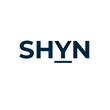
Related Posts
How to clean mould on walls
So with mould there are two parts: Killing the mould spores – that’s where Aeris Mould Pro comes in. It kills and prevents mould regrowth in wet areas 3-4 weekly in dry areas 12 months at a minimum. Removing the stain left behind – once mould dies, it often leaves a stain on fibro or painted surfaces. To deal with that: For patches only: Use a SHYN Magic Eraser + SHYN Degreaser to gently lift the stain off the wall. Another option is applying a light coat of bleach, for larger areas using a Wall & Floor Tool is easier, leave it for around 30 minutes, then rinse/wipe off using a clean damp Microfibre pad. (Just be aware bleach can sometimes affect paintwork, so always test a small patch first.) This way you’re not only removing the look of it, but also making sure the mould is actually gone so it doesn’t just come back.
Learn moreYour Daily (and Weekly) Floor Cleaning Guide
Don't vacuum the hard floors until you've removed the dust and debris with a flat microfibre pad on a tool like our wall and floor tool. Why? Because the vacuum doesn't pick up the dust, it picks up what you can see, why not just pick up everything using the microfibre pad and vacuum or sweep up the pile? An Easier, safer ,and more effective way to clean. If you're using the same tool and a microfibre pad to wash the floor follow these steps for a streak-free clean. Textured, laminate, hybrid, and timber flooring - Use the microfibre pad on the wall & floor tool or your flat mop but make sure the whole thing is wet and squeezed out (you fold it to squeeze the water out). Glide over the surface 3 times and continue. Change the pad after each room. The floor will dry streak-free by itself. Shiny & high gloss flooring - This can go two ways: Streaky, a nightmare, or perfect. 1st option - Wet the pad & squeeze out once you clean the floor, you may need another dry & clean pad to dry the floor. OR 2nd option - Make one line of water in the middle of the pad, so the whole microfibre pad is not wet. And glide over the surface 3 times. If the floor is really dirty the whole pad must be wet otherwise, the pad won't deliver the results we want, and it will feel exhausting. But if it's too wet, it will leave streaks. You can always purchase the SHYN Drying Pad in case this happens, you'll just wipe over the surface with the pad attached to the tool, the water will absorb like a drying cloth, but we don't have to get on our hands and knees.
Learn moreGlass Cleaner Lies: What's Really Making Your Glass Dirty
Why are you using glass cleaners? You're spending money for no reason. Every time you use it, it costs you money when it doesn't need to. Ammonia, alcohols, and surfactants which are in glass cleaners, leave behind a thin layer of residue that acts like sticky tape for dust and grime. Making the surface dirtier, faster. Why breathe in chemicals when you can avoid it? Be more thoughtful of your health. What I recommend Simply wipe the surface in 2 wipes with a wet SHYN Microfibre Cloth, and wipe dry in one wipe using the SHYN Drying Cloth. These cloths will last you 250 washes, about 2 years. It's that simple What Sets SHYN Microfibres Apart Most microfibre cloths just smear dirt around because they’re made with a flat weave that can’t hold much. Our SHYN Ultimate Microfibre is made with a loop terry weave - thousands of tiny loops that grab and trap dirt instantly, picking up to four times more in one wipe. That means faster cleaning & less effort, and no chemicals. And when it comes to drying? Our SHYN Drying Cloth isn’t even microfibre — it’s a unique blend of bamboo, polyester, and polyamide that absorbs water in one wipe, covers a larger surface (50 x 40 cm), and leaves no streaks or lint behind. Once you try it, you’ll never go back to a “normal” cloth, reducing your cleaning time by more than half, and it keeps cleaner for longer.
Learn more
